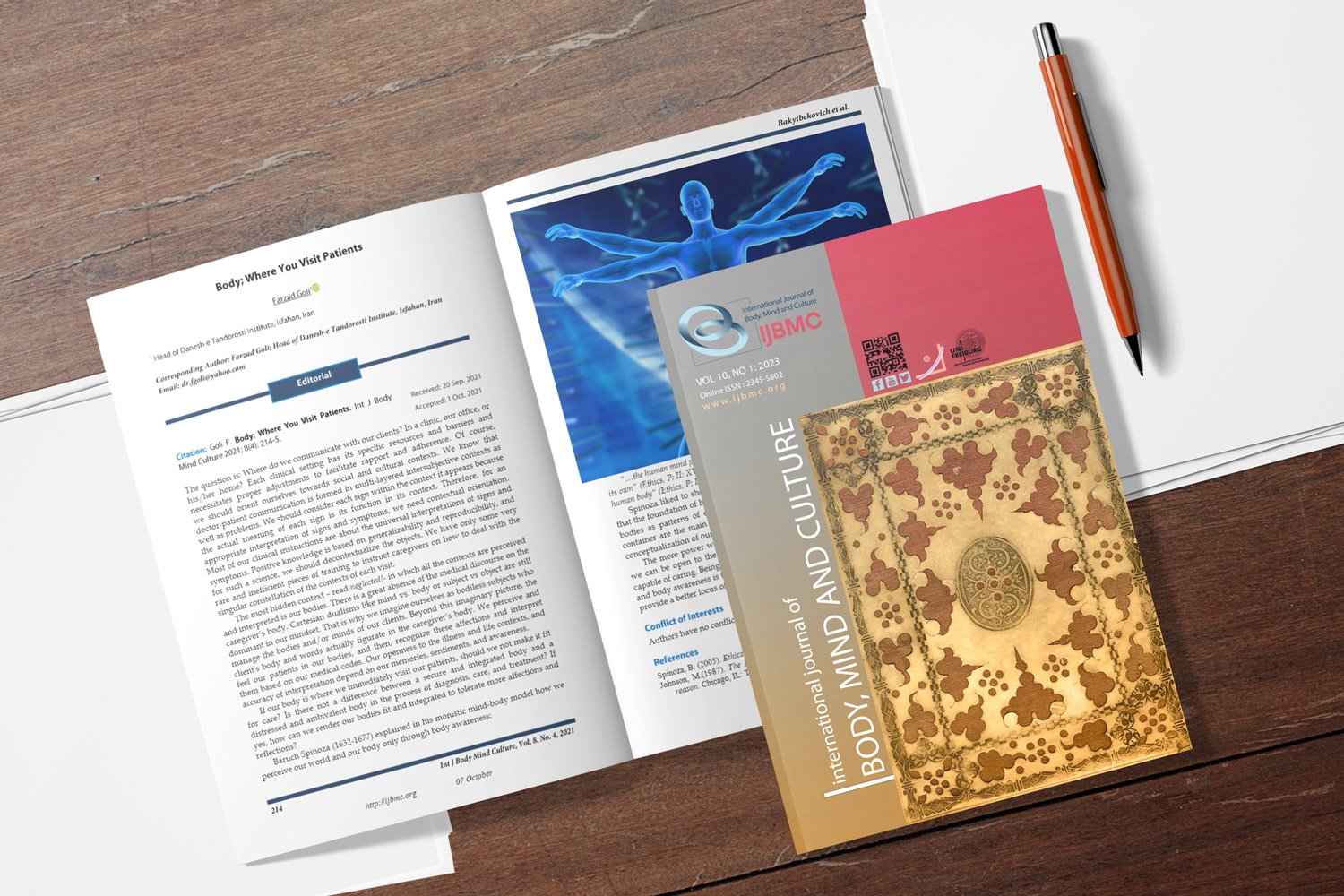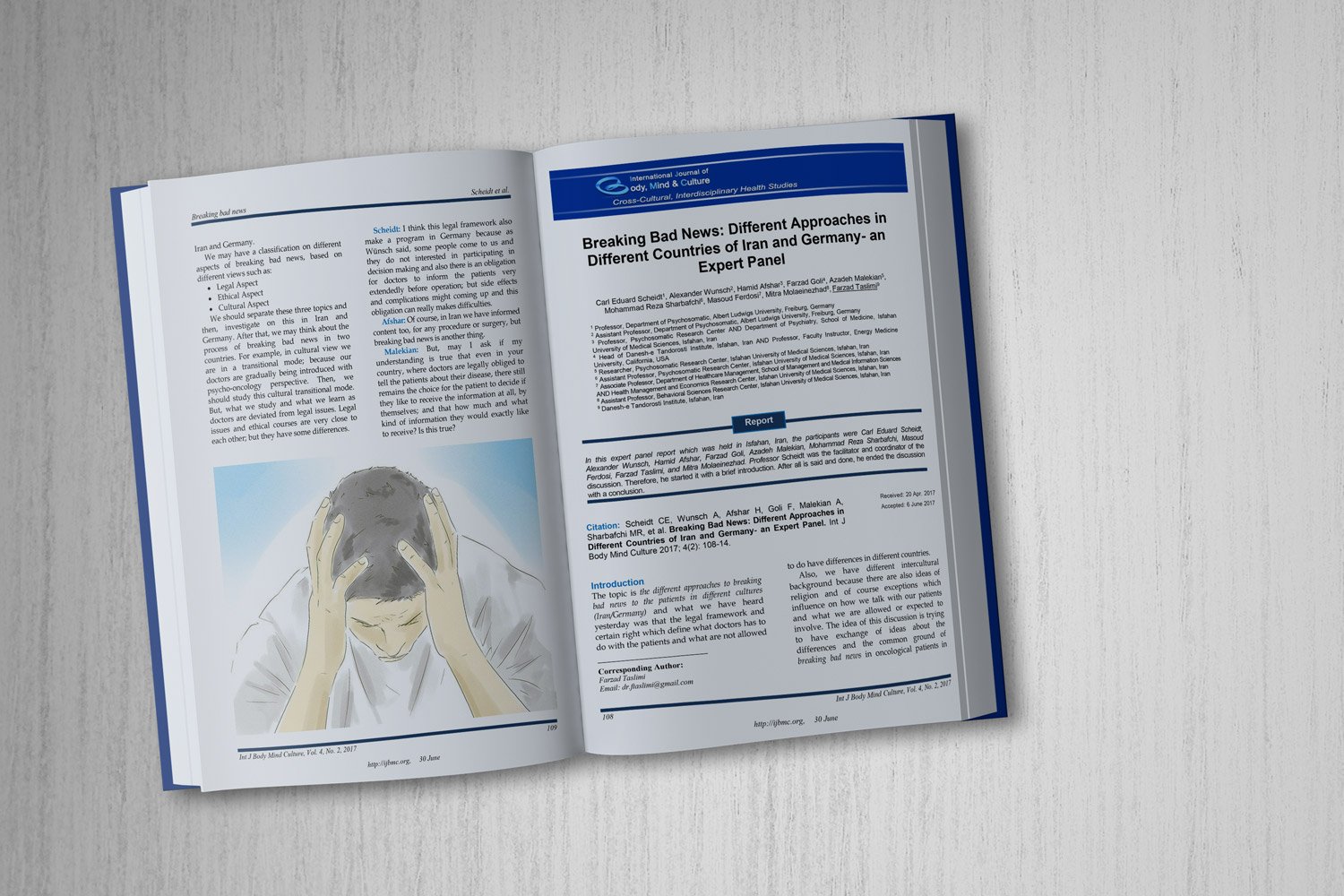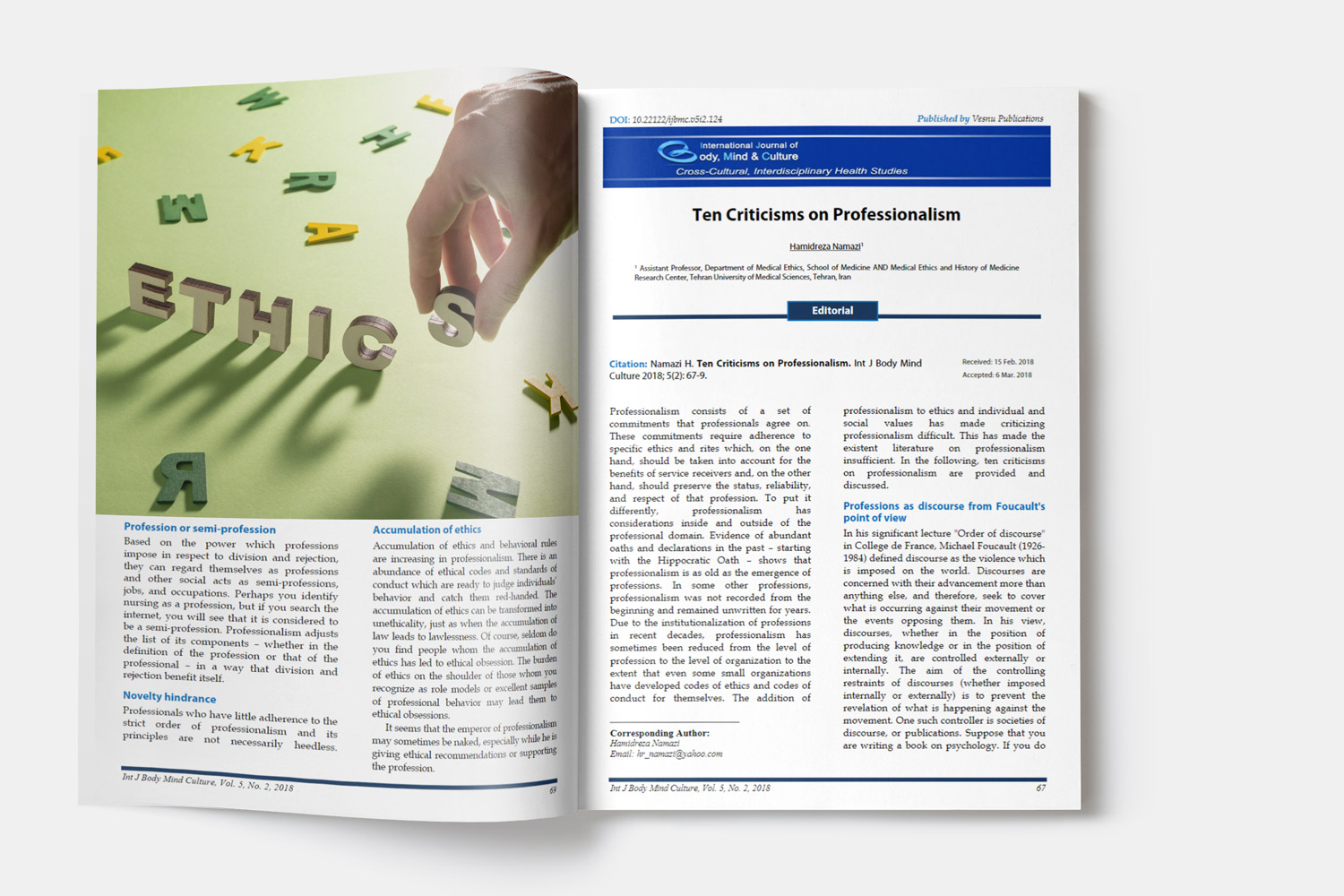Fear of Negative Evaluation as a Mediator Between Emotional Expressivity, Self-Compassion, and Suicidal Ideation in People with Gender Dysphoria
Downloads
Objective: This study aimed to examine whether fear of negative evaluation mediates the relationship between emotional expressivity and self-compassion with suicidal ideation in individuals diagnosed with gender dysphoria.
Methods and Materials: A cross-sectional study was conducted using structural equation modeling (SEM). A total of 267 participants diagnosed with gender dysphoria in Tehran were selected via convenience sampling. Participants completed four validated instruments: the Beck Suicide Ideation Scale (BSSI), Emotional Expressivity Questionnaire (EEQ), Self-Compassion Scale (SCS), and the Brief Fear of Negative Evaluation Scale (BFNES-B). Data analysis was performed using SPSS 26 and AMOS 23. Bootstrapping techniques were employed to test indirect effects.
Findings: Emotional expressivity and self-compassion were both negatively associated with suicidal ideation (p<0.001). Fear of negative evaluation showed a positive direct effect on suicidal ideation (p<0.001) and mediated the relationships between both predictors and suicidal ideation. The final model demonstrated good fit indices (CFI = 0.94, RMSEA = 0.079).
Conclusion: Findings suggest that individuals with gender dysphoria who struggle with emotional expression or self-compassion may be more vulnerable to suicidal ideation, partly due to increased fear of negative evaluation. Interventions aimed at reducing evaluative concerns and enhancing emotional openness and self-kindness may help mitigate suicide risk in this population.
Downloads
Alavi, K., Asghari Moghadam, M. A., Rahiminezhad, A., & Farahani, H. (2017). Psychometric properties of the Ambivalence over Emotional Expression Questionnaire. 11(1), 74-91. https://doi.org/10.29252/rph.11.1.74
American Psychiatric Association. (2022). diagnostic and statistical manual of mental disorders, 5th edition, text revision (DSM-5-TR). American Psychiatric Publishing Inc. https://doi.org/10.1176/appi.books.9780890425596
Babcock Fenerci, R. L., Jenkins, G. A., Gilbert, A. C., Schettini, E., Musella, K., MacPherson, H., & Dickstein, D. P. (2022). Maltreatment history and reasons for self‐injurious behavior among adolescents engaged in non‐suicidal self‐injury versus adolescents who attempted suicide. Suicide and Life‐Threatening Behavior, 52(5), 898-907. https://doi.org/10.1111/sltb.12887
Boase, E. R., & McLaren, S. (2024). Discrimination and suicide risk among transgender and gender-diverse adults: The moderating roles of self-compassion, self-coldness, and gender identity. Psychology of Sexual Orientation and Gender Diversity, 11(4), 606-618. https://doi.org/10.1037/sgd0000634
Carvalho, S. A., & Guiomar, R. (2022). Self-compassion and mental health in sexual and gender minority people: A systematic review and meta-analysis. LGBT Health, 9(5), 287-302. https://doi.org/10.1089/lgbt.2021.043
Chen, D., Shen, Y., Zhou, X., Ying, J., Zhang, J., Zhan, S., & You, J. (2024). The bidirectional longitudinal associations between fear of negative evaluation and suicidal ideation among Chinese adolescents: The mediating role of interpersonal needs factors. Journal of Affective Disorders, 361, 59-66. https://doi.org/10.1016/j.jad.2024.05.151
Claesdotter-Knutsson, E., Andersson, M. J., Cervin, M., Delfin, C. A. U. H. A., & Broman, N. (2024). Rise in Gender Dysphoria Diagnoses and Legal Gender Changes in Sweden: 2005-2017. Archives of Sexual Behavior, 53(10), 3731-3738. https://doi.org/10.1007/s10508-024-02993-4ER -
Dryman, M. T., & Heimberg, R. G. (2018). Emotion regulation in social anxiety and depression: A systematic review of expressive suppression and cognitive reappraisal. Clinical psychology review, 65, 17-42. https://doi.org/10.1016/j.cpr.2018.07.004
Esfahani, M., Hashemi, Y., & Alavi, K. (2015). Psychometric assessment of the Beck Scale for suicidal ideation (BSSI) in the general population in Tehran. Medical Journal of the Islamic Republic of Iran, 29, 268. https://pmc.ncbi.nlm.nih.gov/articles/PMC4715388/
Ghasemi, V. (2013). Structural equation modeling in social research using Amos graphics. Sociologists' Publication. https://www.researchgate.net
Ghiasi, Z., Khazaei, F., Khosravi, M., & Rezaee, N. (2024). Physical and psychosocial challenges of people with gender dysphoria: a content analysis study. BMC Public Health, 24(1), 16. https://doi.org/10.1186/s12889-023-17537-z
Gross, J. J., & John, O. P. (2002). Emotion regulation: Affective, cognitive, and social consequences. Facets of emotional expressivity: Three self-report factors and their correlates. Psychophysiology, 39(3), 281-291. https://doi.org/10.1017/S0048577201393198 10.1016/0191-8869(95)00055-B
Helminen, E. C., Ducar, D. M., Scheer, J. R., Parke, K. L., Morton, M. L., & Felver, J. C. (2023). Self-compassion, minority stress, and mental health in sexual and gender minority populations: A meta-analysis and systematic review. Clinical Psychology: Science and Practice, 30(1), 26. https://doi.org/10.1037/cps0000104
Kardani, L., Bashardoust, S., & Saberi, H. (2021). Provision of a Structural Model for Predicting Suicide Ideation based on Emotion Regulation and Self-Compassion with the Mediating Role of Perceived Social Support in Individuals with Gender Dysphoria. Applied Family Therapy Journal (AFTJ), 2(4), 421-441. https://doi.org/10.61838/kman.aftj.2.4.21
Kassing, F., Dodd, C. G., Palmer, L. E., & Hill, R. M. (2022). Comfort expressing emotions and suicide ideation: evidence of indirect effects via perceived burdensomeness and thwarted belongingness. Archives of Suicide Research, 26(2), 886-895. https://doi.org/10.1080/13811118.2020.1841053
Keating, L., & Muller, R. T. (2020). LGBTQ+ based discrimination is associated with ptsd symptoms, dissociation, emotion dysregulation, and attachment insecurity among LGBTQ+ adults who have experienced trauma. Journal of Trauma & Dissociation, 21(1), 124-141. https://doi.org/10.1080/15299732.2019.1675222
King, L. A., & Emmons, R. A. (1990). Conflict over emotional expression: psychological and physical correlates. Journal of personality and social psychology, 58(5), 864. https://doi.org/10.1037//0022-3514.58.5.864
Kline, R. B. (2016). Principles and practice of structural equation modeling. https://books.google.com
Leary, M. R. (1983). A brief version of the fear of negative evaluation scale. Personality and Social Psychology Bulletin, 9(3), 371-375. https://doi.org/10.1177/0146167283093007
Leary, M. R., Tate, E. B., Adams, C. E., Batts Allen, A., & Hancock, J. (2007). Self-compassion and reactions to unpleasant self-relevant events: The implications of treating oneself kindly. Journal of personality and social psychology, 92(5), 887-904. https://doi.org/10.1037/0022-3514.92.5.887
Lindquist, E. G., Villarosa-Hurlocker, M. C., Raposa, E. B., Pearson, M. R., Bravo, A. J., & Protective Strategies Study, T. (2023). Fear of negative evaluation and suicidal ideation among college students: the moderating role of impulsivity-like traits. Journal of American College Health, 71(2), 396-402. https://doi.org/10.1080/07448481.2021.1891919
Mason, A., Crowe, E., Haragan, B., Smith, S., & Kyriakou, A. (2023). Gender dysphoria in young people: a model of chronic stress. Hormone Research in Paediatrics, 96(1), 54-65. https://doi.org/10.1159/000520361
Meyer, I. H. (2003). Prejudice, social stress, and mental health in lesbian, gay, and bisexual populations: conceptual issues and research evidence. Psychological Bulletin, 129(5), 674-697. https://doi.org/10.1037/0033-2909.129.5.674
Momeni, F., Shahidi, S., Mootabi, F., & Heydari, M. (2014). Psychometric properties of a Farsi version of the Self-Compassion Scale (SCS). Contemporary psychology, 8(2), 27-40. https://www.magiran.com/p1237545
Neff, K. (2003). Self-compassion: An alternative conceptualization of a healthy attitude toward oneself. Self and identity, 2(2), 85-101. https://doi.org/10.1080/15298860309032
O'Brien, K. H. M., Nicolopoulos, A., Almeida, J., Aguinaldo, L. D., & Rosen, R. K. (2021). Why adolescents attempt suicide: a qualitative study of the transition from ideation to action (Vol. 25). https://doi.org/10.1080/13811118.2019.1675561
O'Connor, E., Gaynes, B., Burda, B. U., & Williams, C. A. U. W. E. P. (2013). Screening for suicide risk in primary care: A systematic evidence review for the US Preventive Services Task Force. Agency for Healthcare Research and Quality (US). https://europepmc.org/article/nbk/nbk137737
O'Connor, R. C., & Kirtley, O. J. (2018). The integrated motivational-volitional model of suicidal behaviour. Philosophical Transactions of the Royal Society B: Biological Sciences, 373(1754), 20170268. https://doi.org/10.1098/rstb.2017.0268
Polanco-Roman, L., Ahmad, K., Tigershtrom, A., Jacobson, C., & Miranda, R. (2024). Emotion expressivity, suicidal ideation, and explanatory factors: Differences by Asian American subgroups compared with White emerging adults. Cultural diversity & ethnic minority psychology, 30(1), 11-21. https://doi.org/10.1037/cdp0000313
Polanco‐Roman, L., Moore, A., Tsypes, A., Jacobson, C., & Miranda, R. (2018). Emotion reactivity, comfort expressing emotions, and future suicidal ideation in emerging adults. Journal of Clinical Psychology, 74(1), 123-135. https://doi.org/10.1002/jclp.22486
Reinecke, M. A., & Franklin-Scott, R. L. (2005). Assessment of suicide: Beck's scales for assessing mood and suicidality. https://books.google.com
Schumacker, R. E., & Lomax, R. G. (2012). A beginner's guide to structural equation modeling. Routledge. https://doi.org/10.4324/9780203851319
Shokri, O., Geravand, F., Naghsh, Z., Ali Tarkhan, R., & Paeezi, M. (2008). The psychometric properties of the Brief Fear of Negative Evaluation Scale. Iranian Journal of Psychiatry and Clinical Psychology, 14(3), 316-325. https://www.sciencedirect.com/
Spokas, M., Luterek, J. A., & Heimberg, R. G. (2009). Social anxiety and emotional suppression: The mediating role of beliefs. Journal of Behavior Therapy and Experimental Psychiatry, 40(2), 283-291. https://doi.org/10.1016/j.jbtep.2008.12.004
Talaei, A., Hedjazi, A., Badieyan Moosavi, N., Dadgarmoghaddam, M., Lotfinejad, N., & Khorashad, B. S. (2022). The epidemiology of gender dysphoria in Iran: the first nationwide study. Archives of Sexual Behavior, 51(4), 1881-1889. https://doi.org/10.1007/s10508-021-02250-y
Tsarpalis-Fragkoulidis, A., Tran, U. S., & Zemp, M. (2024). Fears of positive and negative evaluation and their within-person associations with emotion regulation in adolescence: A longitudinal analysis. Development and Psychopathology, 1-13. https://doi.org/10.1017/S0954579424001366
Van Orden, K. A., Witte, T. K., Cukrowicz, K. C., Braithwaite, S. R., Selby, E. A., & Joiner, T. E., Jr. (2010). The interpersonal theory of suicide. Psychological Review, 117(2), 575-600. https://doi.org/10.1037/a0018697
Watson, D., & Friend, R. (1969). Measurement of social-evaluative anxiety. Journal of consulting and clinical psychology, 33(4), 448-457. https://doi.org/10.1037/h0027806
Wiepjes, C. M., den Heijer, M., Bremmer, M. A., Nota, N. M., de Blok, C. J., Coumou, B. J., & Steensma, T. D. (2020). Trends in suicide death risk in transgender people: results from the Amsterdam Cohort of Gender Dysphoria study (1972-2017). Acta Psychiatrica Scandinavica, 141(6), 486-491. https://doi.org/10.1111/acps.13164
Copyright (c) 2025 International Journal of Body, Mind and Culture

This work is licensed under a Creative Commons Attribution-NonCommercial 4.0 International License.















